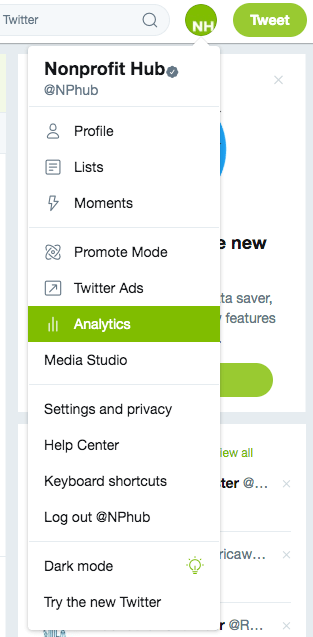Social Media Analytics: The Basics

So, you’ve mastered the art of creating effective, engaging social media content. Congratulations! But your job doesn’t stop there. If you really want to get the most out of socials, interpreting your analytics and using them to your advantage is key.
From social media analytics, you can uncover tons of insightful information about your organization’s online presence, from the best time of day to post, to which type of content your audience engages with most, to how much your accounts have grown over time—and so much more.
It’s important to understand a couple of important terms first:
Impressions are how many times your post showed up on someone’s timeline. This doesn’t necessarily mean the person actually took the time to read it, but an impression confirms that it did, in fact, show up on their feed.
Engagement is any interaction with your content, like Twitter favorites, Facebook shares and clicks.
Engagement rate is the ratio of total impressions versus total engagements.
Page views are rather self explanatory, but this is how many people have visited your profile page within a certain time frame.
Where are my analytics located?
On Twitter, click the profile icon on your home page to drop down the menu. You’ll find your analytics here:
Once you get there, you’ll see a general overview of all your content, including your top tweet, mention and follower, plus a broad recap of each month’s engagement.
To view each tweet in more detail, which you’ll need to do in order to view your engagement rates, click “View all Tweet activity” directly under the “Top Media Tweet” section.
On Facebook, your analytics tab is actually named “Insights.” Go to your organization’s page and select it from the toolbar. You’ll want to locate and pay special attention to the sidebar tabs “Reach,” “Posts” and “People.”
And, on Instagram, you can find your analytics on the top right corner of your profile here:
Note that Instagram analytics are a little simpler compared to the other apps because, since you can’t include direct links in your captions, “likes” are the main indicator of engagement.
Which information matters most?
Analytics pages will throw an overwhelming amount of information at you—some of it incredibly valuable, some of it not so much. All it takes is a close look at a few main factors to evaluate your overall social media performance.
Engagement
The most important statistic you should examine is your engagement rate. The goal of social media is to lure people to your website so they make a donation, volunteer or somehow get involved with your organization, right? If no one’s clicking on your social media links, that means your website traffic is likely suffering.
Take a good look at each of your posts to determine which type of content usually earns you the most clicks. If you see a low percentage, don’t panic. Most engagement rates usually hover around 1 or 2 percent.
Post times
Analytics also allow you to see which time of day your posts receive the most impressions. On Twitter, you can find this chart on the right side of your profile (not your analytics page) when in desktop view. On Facebook, click the “Posts” tab in “Insights” and drag your mouse across the chart to view when the most users are online. From there, you can strategically schedule your posts for when the majority of your audience will actually see it, which will increase your chances for interaction.
Your audience
Another super valuable tool that analytics provide is a closer look at the people behind the screens. Through the “Audience” tab on Twitter, the “People” tab on Facebook and front and center in Instagram analytics, you can gather information about the types of audiences engaging with your social media content.
How old are they? Do you have more men or women followers? Where do they live? Twitter even lets you get borderline-creepy with your search, giving you information about your viewers’ interests, careers, lifestyles, average income and more.
Once you have a better feel for your audience, you’ll be able to use their background information to make your content more relatable and compelling to them.
General upkeep
You should also be keeping track of your social media’s all-around growth by keeping a close watch on your impressions, follower counts, page views, etc. It’s wise to document this on an Excel sheet or other database so you can easily compare your stats from month to month.
It’s also important to use common sense along with these analytics. If you’re seeing lots of negative percentages and red down arrows, you should reevaluate your strategy or mix up your content. If you’re noticing a lot of growth and green, keep doing what you’re doing!
Of course, this article is meant to serve as a starter guide to social media analytics. The internet is constantly keeping track of helpful facts and figures without you even realizing it. Take the time to explore all the other analyzations each app offers, and use them to make your content more timely and targeted. Good luck!
The post Social Media Analytics: The Basics appeared first on Nonprofit Hub.











Leave a Reply